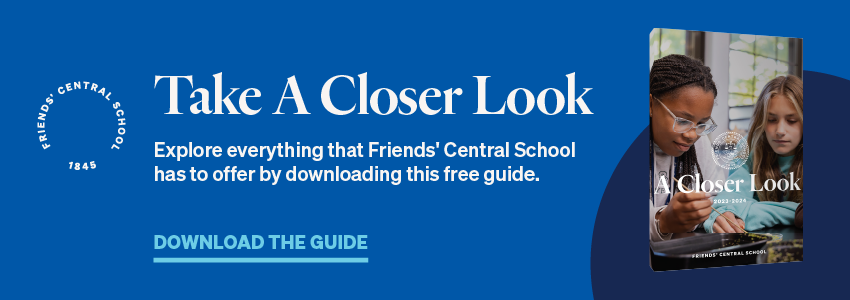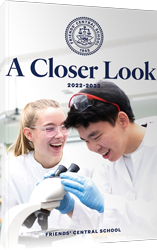.jpg?width=848&name=covid-learning-slide-(insert-image).jpg)
The last year has been a challenge for all of us, as the pandemic has forced us to embrace social distancing. In the beginning we talked about trying to flatten the curve to curb the spread of the virus. And then, as the virus surged, the narrative changed to protecting ourselves, our loved one and our community.
Social, or physical distancing has had an enormous impact on everyone. For many (though not all) adults, it has meant working from home. For children, this meant spending some, or even most of the year in a virtual or hybrid learning, model.
Of course, just as many adults have begun to experience diminished workplace performance and increased levels of burnout in recent months, the same can be true for children engaged in the serious work of learning during a pandemic.
Many parents have expressed concern about their children’s learning. Have you noticed that your child has not progressed as far in their education or abilities as you might have expected in a normal year? Have you noticed a slide in areas, such as reading comprehension or computational skills? Have you found your child to be less focused or less willing to engage socially?
Learn how our engaging curriculum and faculty will help your child stay on track and excel academically and socially.
Colloquially, these “symptoms” have all become known as signs of the COVID slide. Below is a look at what the term means, why it’s begun to exhibit itself in many children, and some steps that you can take to help support your child through the final innings of the pandemic in order to limit its lasting effects.
What is the “COVID Slide”?
The COVID Slide, also known as COVID learning loss or pandemic learning loss, is a term that educators and policy makers have begun using to refer to the negative repercussions that the pandemic has had on children’s education and social emotional development. The term comes from the idea that children are “sliding backwards” in certain areas instead of moving forward.
While there are many different factors that have potentially contributed to this phenomena, the most accepted reasons include interruptions in a child's education caused by pandemic-related factors, including:
- Needing to adapt to virtual school or remote learning
- The brain challenge of so much screen time coupled with diminished physical activity
- A slowed pace of instruction
- A lack of interactions with teachers and peers
- General psychological effects (stress, boredom, etc.) of the pandemic
When academic regression is the focus, it's primarily centered on the early childhood and elementary years. That is because these are the years that basic reading, writing, and math skills are still being solidified. Lack of access to consistent, high-quality, developmentally appropriate instruction could lead to a need for additional review or reteaching because students may become "rusty" in those areas. Skill regression and reduced forward progress are particular concerns for students who have been learning both remotely and asynchronously—at home and with minimal interaction with teachers and peers—for the better part of a year.
Reduced academic progress on a larger scale might also result from teachers needing to adjust their pacing in order to allow students and themselves time to adapt to new modes of teaching and learning. Because of this, teachers may not cover as much content in the 2020-2021 school year as they would in a typical school year. This isn't necessarily a bad thing; being responsive and adaptive to student needs and changing conditions should take precedence over a rigid curriculum schedule, and this responsiveness can extend into the 2021-2022 year as teachers collaborate to decide where to begin their instruction based on what was taught and learned in the preceding year.
Supporting Students Through Covid Learning Loss
1. Prioritize mental and physical wellness.
Mental and physical wellness have always been, and will always be, an important part of raising smart, vibrant children. In many ways, it may be more important now than ever before.
Any steps that you can take to ensure that your child is spending enough time outside in nature, getting enough sleep, eating nutritious meals, and interacting with their friends and loved ones in a safe way will help to minimize the stress and other negative emotional and psychological effects that the pandemic has brought.
2. Establish a routine and preserve a sense of normalcy.
Maintaining a sense of normalcy for students is important, and just as we strive to do this to the greatest extent possible in the classroom (whether in-person or virtual), families should also maintain school-related routines and expectations. Maintaining bedtimes and waking times, family meals, chores, and traditions will lend a feeling of stability even though so much else has changed and continues to change. If your child is learning virtually, taking steps to create an effective remote learning schedule and educational space within your home can go far in establishing a sense of normalcy that allows your child to excel.
Setting small goals and finding balance in each day should take the place of an emphasis on earning high grades right now.
Download our free guide to view student schedules and gain a sense of campus life.
3. Talk to your child about how they’re doing.
If your student is struggling academically or emotionally, talk to them about their experience this year. How are they feeling about school?
What is it like to be in a socially-distanced classroom? How do they interact with their teachers? What is working well for them, and what other types of support might be helpful? Is there time in the day for students to socialize?
Next, depending on your child's age, communicate with their teacher(s) or help them initiate communication. You might also consider scheduling a consultation with a member of the Student Support Services team to brainstorm additional ways to support your child at school and at home.
4. Keep this school year in perspective—children are resilient and with the right support they will bounce back and excel.
Finally, try to keep your child's school challenges this year in perspective. Nearly every child in the world has been affected by educational shifts resulting from the pandemic. It’s important to bear this in mind and not to share your concerns with your child.
The heaviness and duration of the pandemic are affecting all of us. This is why wellness should supersede achievement in everyone's mind. Certainly, we want our kids to do well and we don't want the added stress of wondering whether their academic futures have been derailed. However, just as we adults are experiencing increased stress, reduced motivation, lack of focus, and dysregulated emotions, so are our kids.
A Partnership Between Parents and School
Combatting COVID learning loss is not something that parents should worry excessively about, but it is something to be aware of, especially as we approach a new sense of normal. In the coming weeks and months, it will be important to gauge your child’s progress and lay a path moving forward that can help them recover any lost education and move seamlessly back into “2019” school life. Working closely with your child’s school will prove to be one of the most effective means of doing so.
At Friends’ Central School, we're privileged to have had the resources to provide high-quality instruction, in person with careful toggling to remote when necessary, throughout the year. We’ve prioritized interacting with our students no matter where they are, and working as a team with families in support of each student from the rapid onset of the pandemic last spring through today.
Last spring when schools shifted to remote learning all around the same time, our teachers had several built-in days to prepare for this shift. In addition, each division regularly sought feedback from about the academic effectiveness of remote instruction and how students were faring emotionally. We began with primarily asynchronous instruction, but, based on feedback, moved to varying forms of synchronous instruction during April and May. This year, all students have been able to access fully synchronous instruction whether they or their teachers are on campus or remote.
Our teachers have worked really hard—and are still working—to continually evaluate the balance between progress and responsiveness. In the early grades they have created new structures for differentiation and found ways to provide foundational math and phonics instruction. In the later grades of Lower School and in Middle School they have found ways to engage students in thematic and project-based learning that offers choice and fun while maintaining rigor. In Upper School, the road to college continues with an enhanced focus on relationships and supporting students through the impacts of social isolation during a developmental stage when social connections are critical. As we look ahead to the 2021-22 academic year, our faculty are already planning for another round of adaptations in order to best support students and their families in the ever-shifting COVID landscape.




